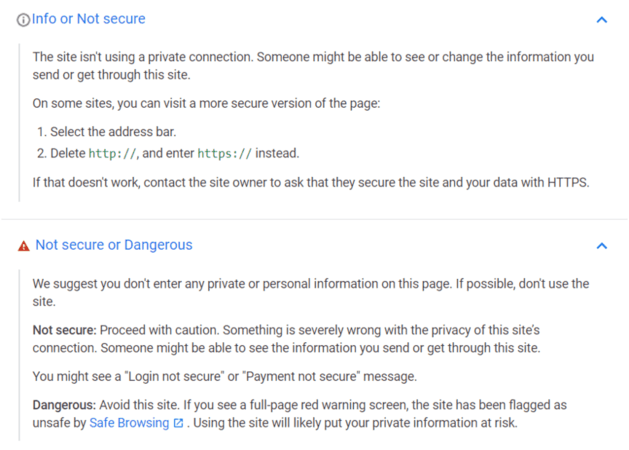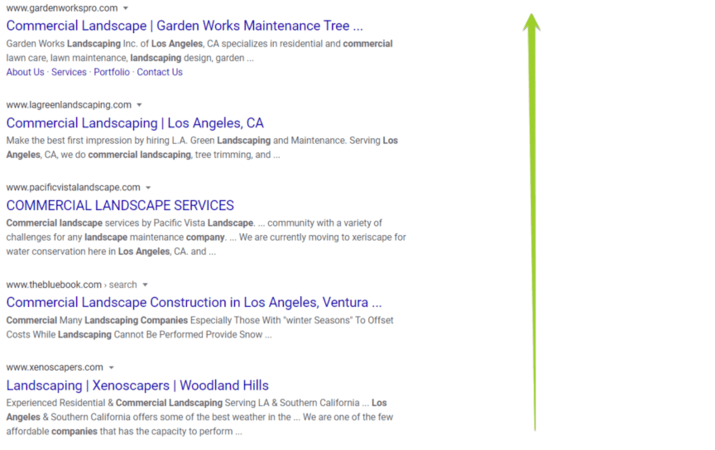Others
What Is HTTPS? (And the Difference Between HTTP and HTTPS)
Here’s a great article from WebFX Blog
Ask David, a small business owner of an ecommerce company, about how to improve profit margins and he’ll have all the answers. Ask him about Hypertext Transfer Protocol Secure, better known as HTTPS, and he’ll have one response: Just what is HTTPS, exactly?
HTTPS is a network protocol standard. It encrypts data, like your credit card information, and ensures its safe transfer, like to an ecommerce store, across a secure connection. Without HTTPS, which appears as a padlock in browsers, your information is visible and vulnerable to hackers.
That’s why HTTPS is a must for companies and their websites.
If you’re curious to learn more about HTTPS, keep reading and get answers to questions like:
- What does HTTPS mean?
- What is the difference between HTTPS and Hypertext Transfer Protocol (HTTP)?
- What are the advantages and disadvantages of HTTPS?
- What are the disadvantages and advantages of HTTP?
- How do I add HTTPS to my website?
You can also learn more about moving your site from HTTP to HTTPS by contacting WebFX. We feature an in-house, U.S.-based development team that can help your business transition to HTTPS. Just contact us online or call us at 888-601-5359 to learn more!
What does HTTPS mean?
HTTPS is an upgraded version of the network protocol standard HTTP. With HTTPS, websites create a secure online experience by encrypting data, like names, addresses, and credit card numbers, and ensuring its safe transfer to the site’s server.
Websites using HTTPS have a padlock in web browsers, as shown in the image below.
What is the difference between HTTP and HTTPS?
The core difference between HTTP and HTTPS is security. HTTPS is a secured network protocol standard, while HTTP is not secure. This difference leads to a few others. HTTPS, for example, requires a Secure Sockets Layer (SSL) certificate, while HTTP doesn’t.
Advantages and disadvantages of HTTP
If your website uses HTTP, it’s helpful to understand what’s good and bad about HTTP.
Advantages
From a business perspective, HTTP doesn’t offer much value.
Sure, HTTP provides your company online access to people within your target market. Not to mention, it saves you the cost of paying for an SSL certificate each year.
Most website hosting providers provide SSL certificates for free.
Guess what, though? Most businesses receive their SSL certificates for free, thanks to their website hosting providers.
That’s why having an HTTP website is rarely an advantage — instead, it’s a disadvantage.
Disadvantages
The drawback of HTTP goes back to the difference between HTTP and HTTPS: Security.
Whether your company operates online or offline, your website attracts user data. From someone purchasing your product to completing your contact form, you receive personal information that people trust your business to protect.
Almost 85% of people will not buy from unsecure, HTTP websites.
That’s why almost 85% of shoppers will abandon a purchase that sends data, like credit card information, over an unsecure connection. In other words, most people will not buy from unsecure, HTTP websites.
If your company’s site uses HTTP, it’s costing your business sales.
When you have a site with HTTP, you open the door for hackers to access and steal user data. The data doesn’t get encrypted, which means it gets transferred with zero security. Think of a bank transporting money from one branch to another — but without an armored car.
Web browsers, like Google Chrome, recognize the risk of HTTP websites.

That’s why most Internet browsers will notify users when visiting an HTTP versus HTTPS site. Google Chrome, for example, will generate a “Not secure” or “Dangerous” notification that warns users about visiting the website.
For many businesses with HTTP sites, this warning leads to users leaving your website before they even arrive. One study, for example, found that 64% of users would leave sites with the “Not secure” notification.
Your company not only loses traffic when this scenario happens but also valuable sales and leads, which affects your bottom line. That’s why, if you want to help your business thrive long-term, you need to say goodbye to HTTP.
Advantages and disadvantages of HTTPS
Before your company upgrades to HTTPS, however, it’s helpful to learn about its unique pros and cons.
Advantages
HTTPS offers several benefits, including:
- Secures your website
The core advantage of HTTPS is its ability to secure your site. When you have HTTPS on your website, you encrypt sensitive data and ensure its safe transfer from a user’s device to your business. Essentially, you transport all the data your site collects via an armored car.
- Helps your site appear in search results
HTTPS also helps with search engine optimization (SEO). If you’ve ever looked for your website, services, or products on a search engine like Google, you’ve probably wondered why you weren’t number one. It’s because of SEO.

SEO is the practice of optimizing websites according to the ranking factors of search engines, which search engines use to organize their search results. If you optimize for these ranking factors well, you’ll often get rewarded with a top spot in search results.
HTTPS is one ranking factor that the world’s largest search engine, Google, uses.
HTTPS is one of Google’s ranking factors for search results.
Sites that use HTTPS send a positive signal to Google because they offer a more secure user experience. Like all search engines, Google is in the business of providing people the information and experiences they want.
Getting your data stolen isn’t something people want, so Google views HTTP sites negatively.
When you update to HTTPS, however, Google views your website more positively, which can help your rankings in search results. Keep in mind, though, that HTTP is one of more than 200 ranking factors. You’ll need to optimize more than your network protocol standard to rank number one.
- Protects your business and your customers
HTTPS also offers the benefit of protecting your company and your customers. Whether your business focuses on generating leads or sales online, you want to safeguard the data of your current and future clients.
If you don’t, you will hurt your brand.
For perspective, almost 65% of consumers say they’re unlikely to do business with a company where their data got stolen, whether personal or financial. Even if the data isn’t sensitive, 50% of consumers still see themselves as unlikely to work with the company responsible.
A reputation for mishandling customer data can follow companies for years, and while big brands can survive those setbacks, small businesses rarely can. Protect your site, your customers, and your company by moving to HTTPS.
- Give your company a powerful trust signal
Padlocks are synonymous with security. That’s why web browsers use the padlock to signify a safe, secure, HTTPS site. It’s also why many shoppers and business buyers look for the padlock when shopping online.
Upgrade your website to HTTPS, and you can send a powerful signal to users that results in more sales and leads.
Upgrade your website to HTTPS, and you can send a powerful signal to users.
When people see that they can trust your site with their information, they’re more likely to add your product to their cart and checkout. Or, if you’re a lead-based business, they’re more likely to complete your contact form and share personal information, like their email and phone number.
For your company, that translates to more business.
Disadvantages
When it comes to comparing HTTPS vs. HTTP, HTTPS isn’t known for its drawbacks.
Yes, you’ll need to purchase an SSL certificate to move your site from HTTP and secure it, but many businesses receive SSL certificates through their website hosting provider. Even if you have to purchase an SSL certificate, the annual cost is generally a few hundred dollars for a small-to-midsized business.
In comparison, enterprise-level companies may spend upwards of $1500 on an SSL certificate.
Overall, HTTPS offers far more advantages than disadvantages and is well worth the investment.
How to secure your website with HTTPS
Now that you know the advantages and disadvantages of HTTPS, as well as HTTP, are you ready to make the move? If you are, you’ll need some time to plan the transition, which involves purchasing your SSL certificate, installing it, and setting up HTTP to HTTPS redirects.
In most cases, you’ll need a developer’s help to complete these steps for making your site HTTPS:
- Buy your SSL certificate
- Map your redirects, from your HTTP pages to your HTTPS pages
- Install your SSL certificate on your site’s server
- Set up your redirects (via your .htaccess file) from your HTTP pages to your HTTPS pages
- Update your XML sitemap, which helps Google crawl and index your site for its search results
- Submit your updated XML sitemap through Google Search Console’s Sitemap report
- Confirm your redirects by checking Google Search Console’s Coverage report
It’s essential to follow the above outline when moving from HTTP to HTTPS. While some steps, like creating redirects, may seem skippable, they have a noticeable impact on your website’s ability to generate sales and leads.
Failing to set up redirects hurts your SEO.
Remember SEO?
Well, without redirects, you have duplicate content on your site, the HTTP and the HTTPS version. Duplicate content is a problem because it affects your website’s value and relevance from Google’s perspective, which can influence where your site ranks in search results.
Failing to set up redirects, like by deleting the HTTP page, also hurts your SEO.
Those pages have a history with Google, as well as established rankings. When you delete those pages, you eliminate the traffic, leads, and sales that come to those pages. Their rankings won’t transfer to the HTTPS pages automatically — you need to set up redirects to make that happen.
That’s why it’s critical to work with a developer familiar with SEO.
Need help moving from HTTP to HTTPS?
Going from HTTP to HTTPS with limited development experience can lead to a range of problems, from your site going offline to tanking in search results. If you have a developer to help, however, they can make sure the process goes smoothly.
If you don’t have an in-house developer that can help, you can call on the WebFX team. We feature an in-house development team here in the U.S. and can take care of installing your SSL certificate, setting up your redirects, and updating and submitting your XML sitemap.
Just give us a ring at 888-601-5359 or contact us online to let us know how we can help!
The post What Is HTTPS? (And the Difference Between HTTP and HTTPS) appeared first on WebFX Blog.
